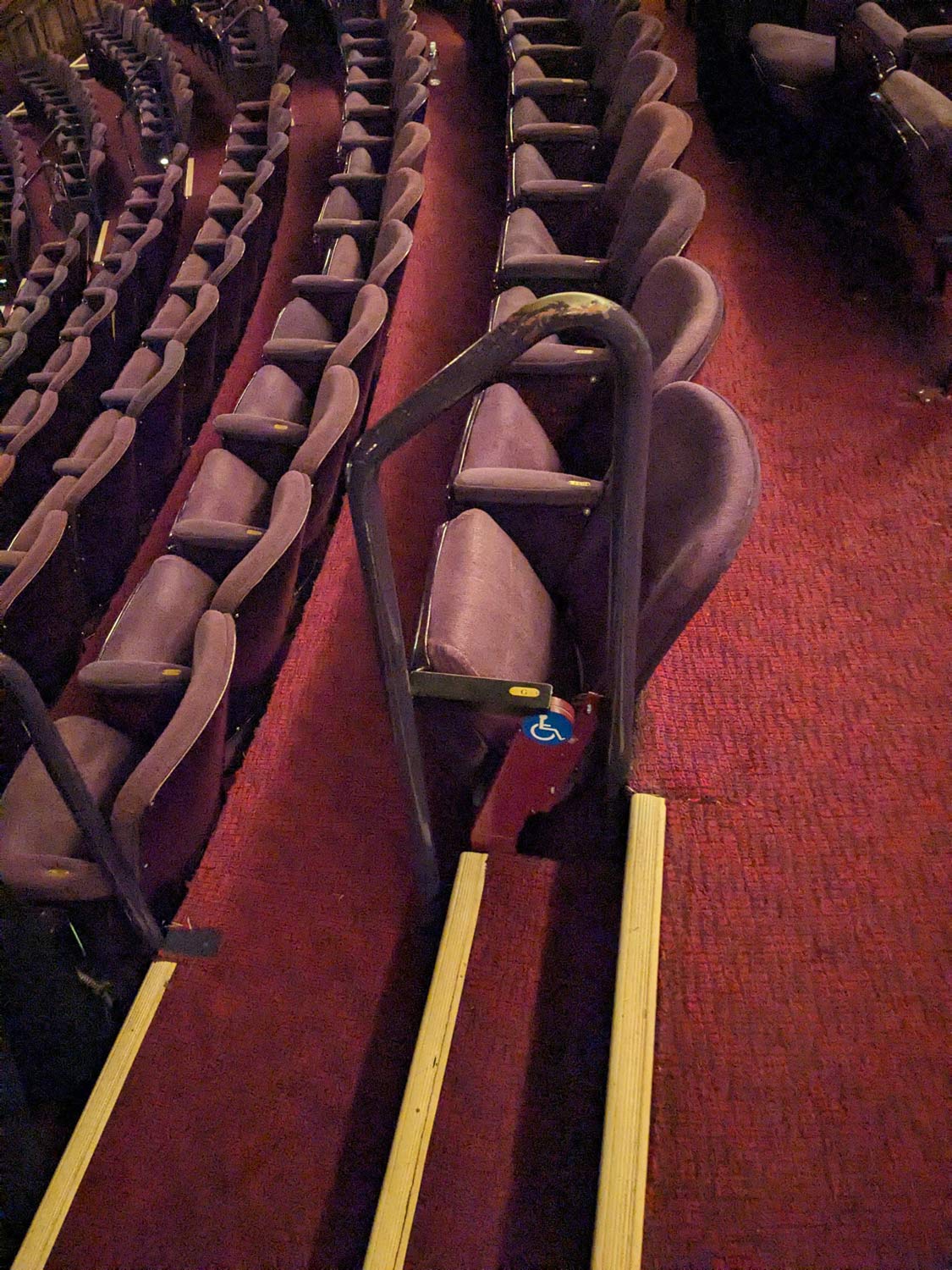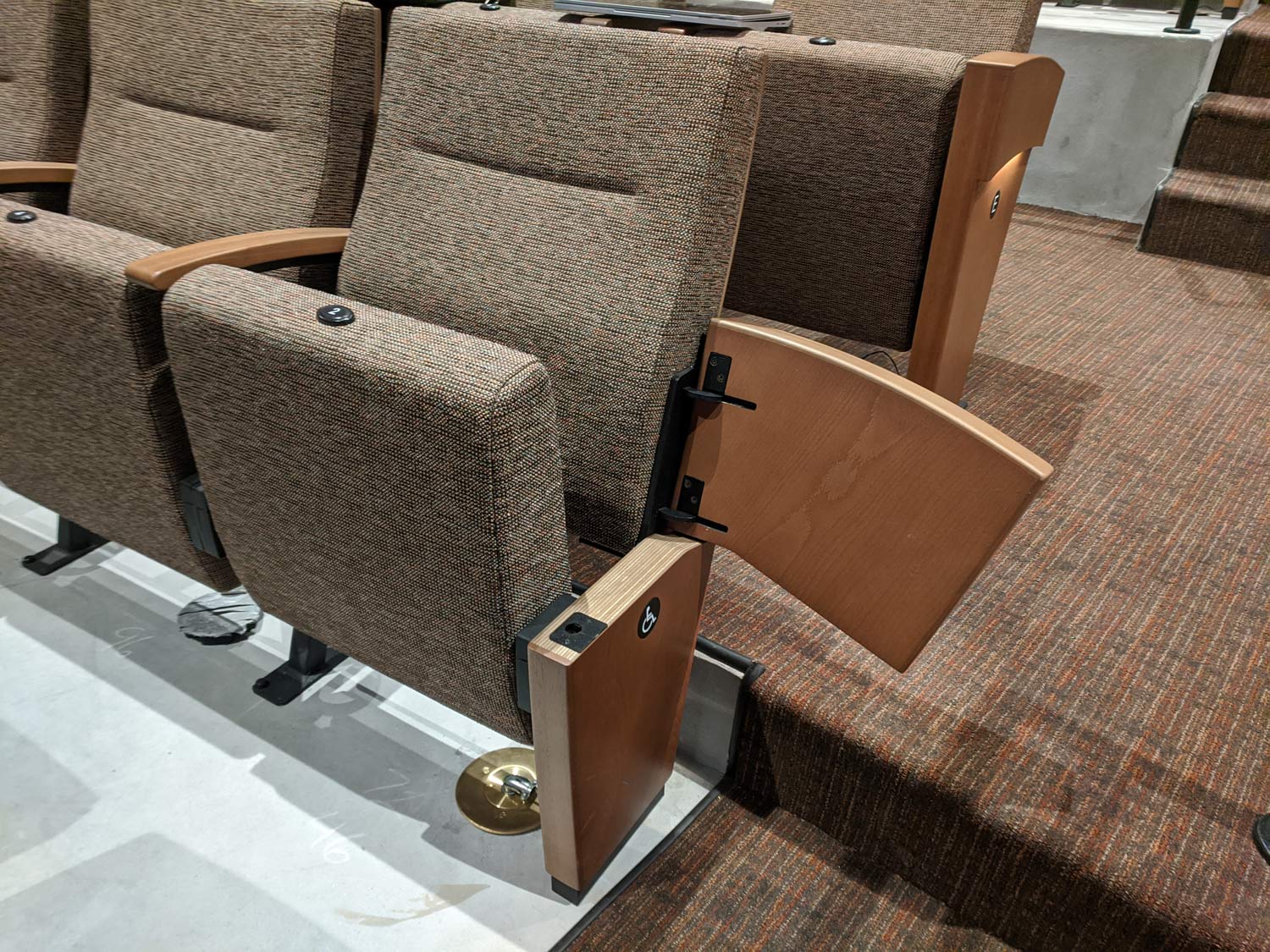Accessibility on the Aisle
The wheelchair icon, officially the International Symbol of Accessibility, may lead to some confusion about the purpose of Designated Aisle Seats. An advisory note in the ADA Standards for Accessible Design (ADAAG), points out that these seats are “intended for use by individuals who have difficulty walking.” Likewise, International Building Code (IBC) only requires that Designated Aisle Seats be “the aisles seats located closest [emphasis added] to the accessible routes,” supporting that they are not originally intended for patrons who use wheelchairs.
According to Marsha Mazz, former Director of the Office of Technical and Information Services for the U.S. Access Board, Designated Aisle Seats were suggested by Access Board member Robert C. Brostrom from his personal experiences. Congress passed the Architectural Barriers Act in 1968, and the U.S. Access Board was created in 1973. In 1982 the Access Board published the Minimum Guidelines and Requirements for Accessible Design (MGRAD), which in 1984 evolved into the Uniform Federal Accessibility Standards (UFAS). It was not until the 1990 passage of the Americans with Disabilities Act (ADA) and the publishing of the ADA Accessibility Guidelines (ADAAG) in 1991 that the Designated Aisle Seat requirement became law.

A Designated Aisle seat next to a stepped aisle of an existing theatre; the handrail blocks access and function of the operable armrest. Photo by Robert Jenista
It is important for designers to consider how Designated Aisle Seats relate to architectural elements around them. Steps and handrails in aisles can prevent swing-out arms from opening. A handrail might also completely block a patron’s access into the seat, defeating the purpose of the moveable arm. Swing-out arms, when open, can block a portion of the aisle or access to a row behind. Some designers like to conceal lights under the armrest to illuminate the aisle. If these are mounted to a fold-up arm they can shine light in patrons’ and performers’ eyes.
The aisle seats closest to the accessible route may include those that can be reached by wheelchair. With planning from architects and theatre consultants, enough space can be allocated for accessible Designated Aisle Seats to serve an additional purpose, allowing patrons in wheelchairs to transfer to a theatre chair. While some wheelchair users may be more comfortable in or require equipment that is integral to their own chair, other patrons may be using a complementary wheelchair from the Box Office or temporarily using a motorized scooter after an injury. This then requires a place and a plan for storing the wheelchair.
Designated Aisle Seats often go unnoticed, but they offer valuable accommodations for patrons with a variety of needs and should be planned carefully to serve as many of those needs as possible.2024 International Building Code 1109.2.5 Designated aisle seats.
2010 ADA Standards for Accessible Design 802.4 Designated Aisle Seats.
By Bob Jenista & Bill Conner, FASTC
Disclaimer: Any views or opinions expressed in this article are solely those of the author and do not necessarily represent those of the American Society of Theatre Consultants. This article is for general information only and should not be substituted for specific advice from a Theatre Consultant, Code Consultant, or Design Professional, and may not be suitable for all situations nor in all locations.




